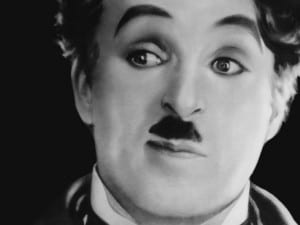Learning from theoretical texts, I have improved upon a basis for my performance,. I had the idea of making fun of death. I have amateur experience doing stand up gigs, my comedy style revolving around puns. My humour is a succession of quick-fire play on words but how could I relate this to an aura of death ? This led me to the notion of puns about illness and dying. Yet, I felt that for the performance to work I needed to have a punchline, but this must be serious. To track this back to my grief I wanted to express that I had lost my Nana, emanating in general terms to anyone’s losses in life. It could basically be set as a succession of rapid puns about death. These would mirror “personal observations, convictions and fears ” (Bonney, 1999, xii). I next had another idea, what if i tried to present my comedic gig without my glasses? My glasses seem to add to my humour. What if something that is part of your identity is driven out of you?
I then began to realize that for me to be funny I would need my glasses. Though, what I really wanted to show was how something changes me ; what makes someone funny and that I have another less sunny side. Bearing this thought in mind, I entered without my glasses on , then as soon as they became part of me, (and I put my glasses on) so did my comic styling. ‘My nana’s dead’ was supposed to be the punchline, but then how is this funny? Have the boundaries been pushed too far? This needs to be delivered without my glasses.Thus, after a succession of awkward laughter expected beforehand, the punchline is delivered with absolute sincerity. This will be unexpected and provoke possible guilt from the audience- should I have been laughing at those jokes when they are focused on people dying? This hopefully will pervade a reaction by society and thus will mirror a reality that can apply to anyone. I want the audience to think something about my work. If they can leave the performance by either “supporting, critiquing, collaborating with and advocating for” (Bonney, 1999, xv) my work I will be happy.
I next needed to add emotion to this piece .It is true that “all solo performers are storytellers” (Bonney, 1999, xiii) and I needed to incorporate this into my work. To aid me with delivering my monologue I turned to the solo performer Spalding Gray, and his monologue Swimming To Cambodia.
The presentation on Spalding Gray really excited me as I felt that he provides a really honest approach to his monologues. This could be administered through his eye contact and facial expressions. However, his monologues not only were focused in his experiences but related to real life. His changes of voice and tone in which he is speaking really inspired me too.
The thoughts that have gone into his monologue are those of deep depression. He was involved in a car accident and his mother died , all contributing to what seems to be a reconstruction of his memory. This in reality is what my (stand up) monologue will be based on. He looks upon society to evoke emotions. This enables him to deliver Swimming To Cambodia with an intimacy with the audience. The line of fiction of reality is blurred. I would like this also to be true of my monologue. As long as the audience are gaining something, the actor reflects society in the world and the text is original; the performers own point of view (Curtis, University of Lincoln, 2014) then the three main elements are present.
The final features which drew me to Spalding Gray’s performance though, and which I will replicate are physical gestures to tell a story, and the ability to play with the audience ; enjoying the moment and stepping outside of oneself to deliver the piece. Finally, the eyes drew me in. I feel that if I can interlock the audience with complete focus throughout then the intimacy which I want to create will be engaged.
However, once I look at setting the scene and the mood of the audience how can my solo performance change?
Works Cited
Bonney, Jo (ed.) (2000) Extreme Exposure: an anthology of solo performance texts from the twentieth century, New York: Theatre Communications Group
Curtis, Martin (2014) ‘Solo Perfomrance’ lecture , BA Drama Seminar, Lincoln: University of Lincoln, 3 March.
